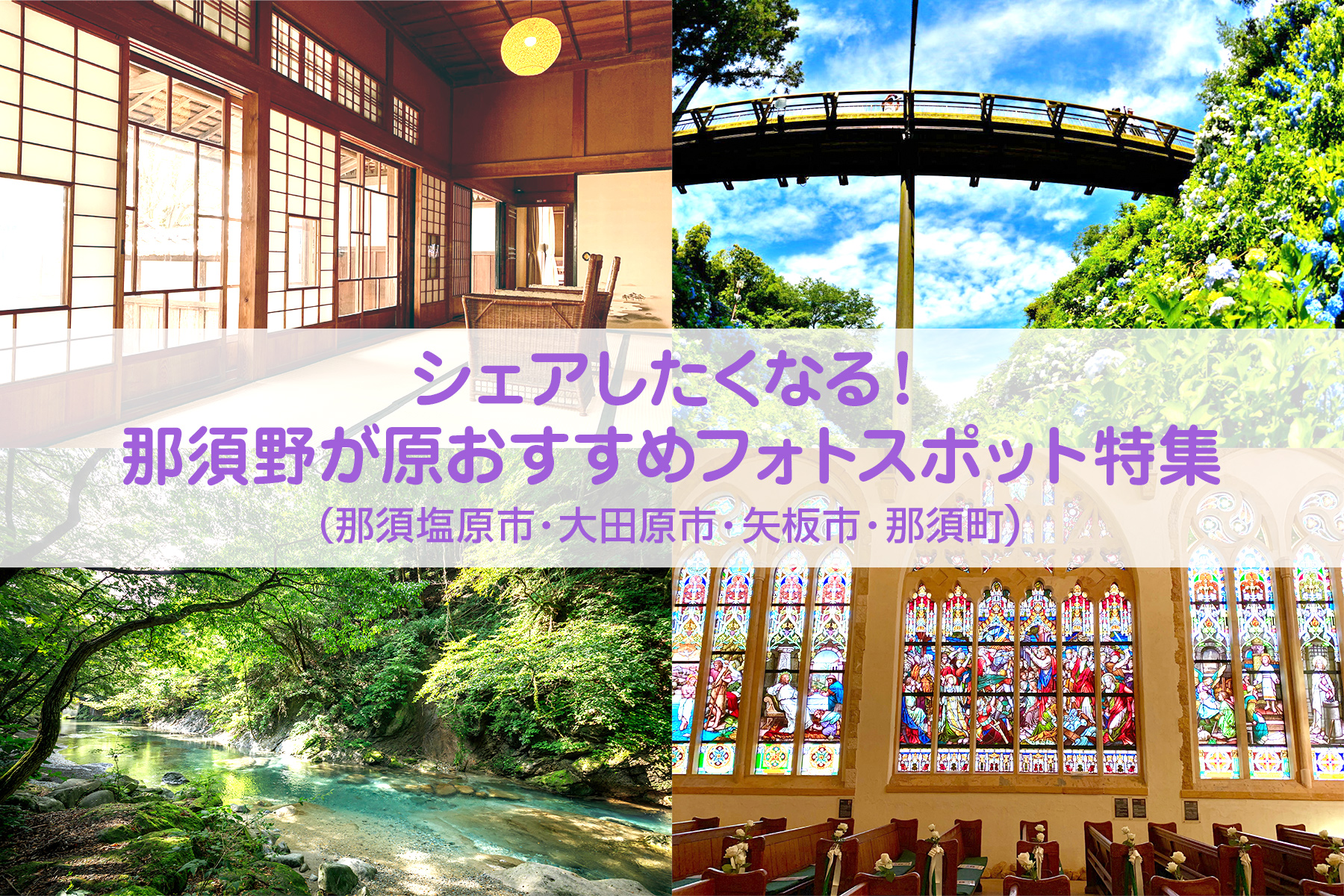
Nasushiobara is an alluvial fan that retains the remnants of the Meiji era, straddling Yaita City, Otawara City, Nasu Shiobara City, and Nasu Town in Tochigi Prefecture. There are not only 31 cultural properties related to "Japan Heritage" but also many scenic spots that you will want to take a picture of.
In this article, I want to stop by for sightseeing in Nasu! From famous places to hidden spots loved by the locals, we will introduce the cultural assets of Nasuno and the attractive photo spots around it together with the recommended time.
In the article, I have prepared various photos such as those with correction function ants of smartphones, those without adjustment, and those with "emotional" in mind. (The correction function can be easily done with the photo app that comes standard with smartphones, such as filters.)
Please use it as a reference when choosing a spot.
In this article, we have solicited photographs related to the cultural properties that make up the story of the Japanese heritage "The future drawn by the Meiji aristocrats- Nasuno is the original charm excavation photo contest ". We also introduce excellent works . Click here for details of the contest ⇒ https://home.nasunogahara.kokosil.net/ja/photo-contest
Click here to find out about "Japan Heritage" ⇒ http://japan-heritage.bunka.go.jp/ja/
- Yaita Takeshi Memorial Hall (Yaita City)
- Nagamine Park (Yaita City)
- Kurobane Castle Ruins Park (Otawara City)
- Former Aoki Family Nasu Bettei (Nasushiobara City)
- Kinomata Valley / Kinomata Bridge Garden (Nasushiobara City)
- Nasu Stained Glass Museum (Nasu Town)
Click the name to go to the details of each spot.
Recommended Photo Spot ① Yaita Takeshi Memorial Hall (Yaita City)
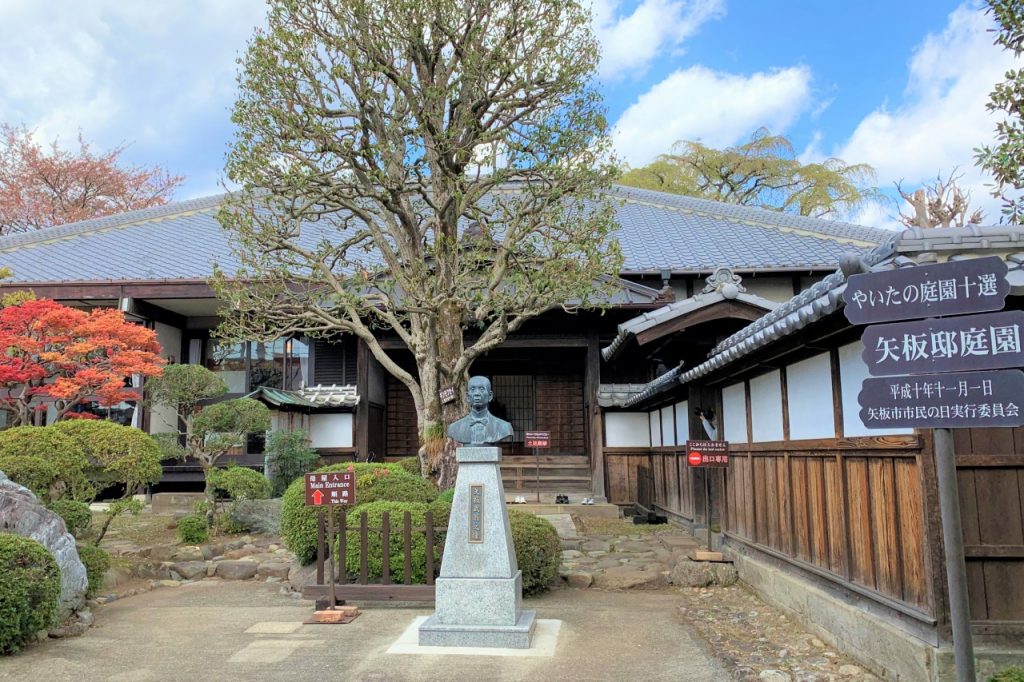
Recommended time (approximate): Late March to early April
About 15 minutes on foot from JR Yaita Station, about 15 minutes by car from the Tohoku Expressway Yaita IC. This is the residence of Takeshi Yaita, a great local man who helped Nasuno cultivate the fields and open the Tohoku Line.
In the Meiji era, it was used as a place for exchanges such as Eiichi Shibusawa, who attracted attention in the Taiga drama in 2021, Aritomo Yamagata, and Katsu Kaishu. It is currently open to the public as a memorial hall.
As a photo spot of the Yaita Takeshi Memorial Hall, the weeping cherry tree planted in the garden, which is said to be about 190 years old, is very popular! It's about 17 meters high.
During the cherry blossoms, it is lit up at night, so you can take pictures with a fantastic atmosphere.
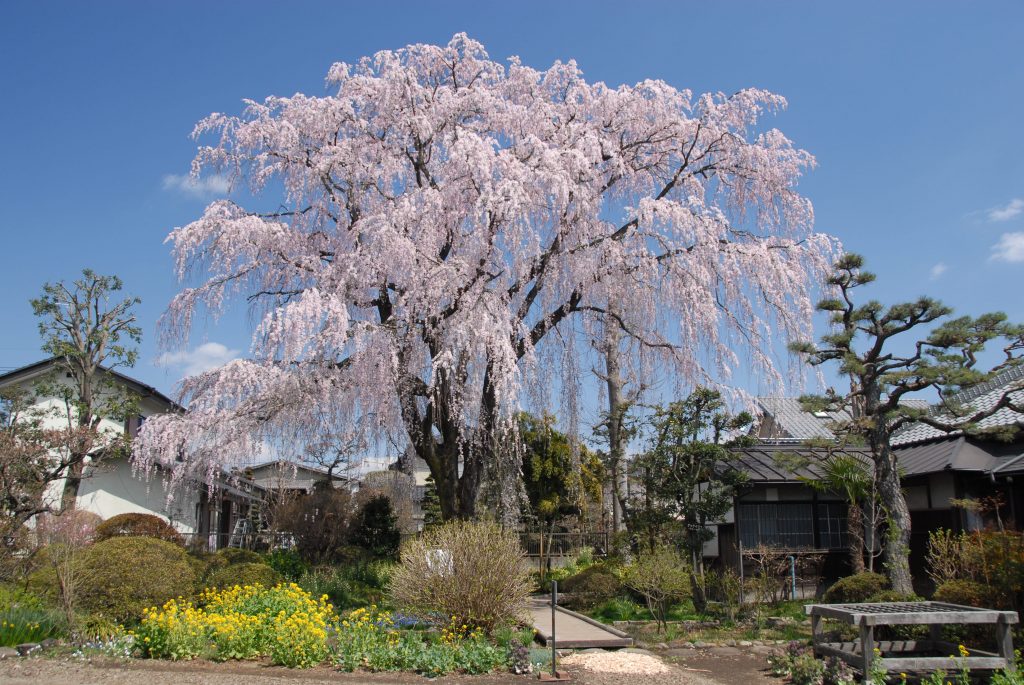
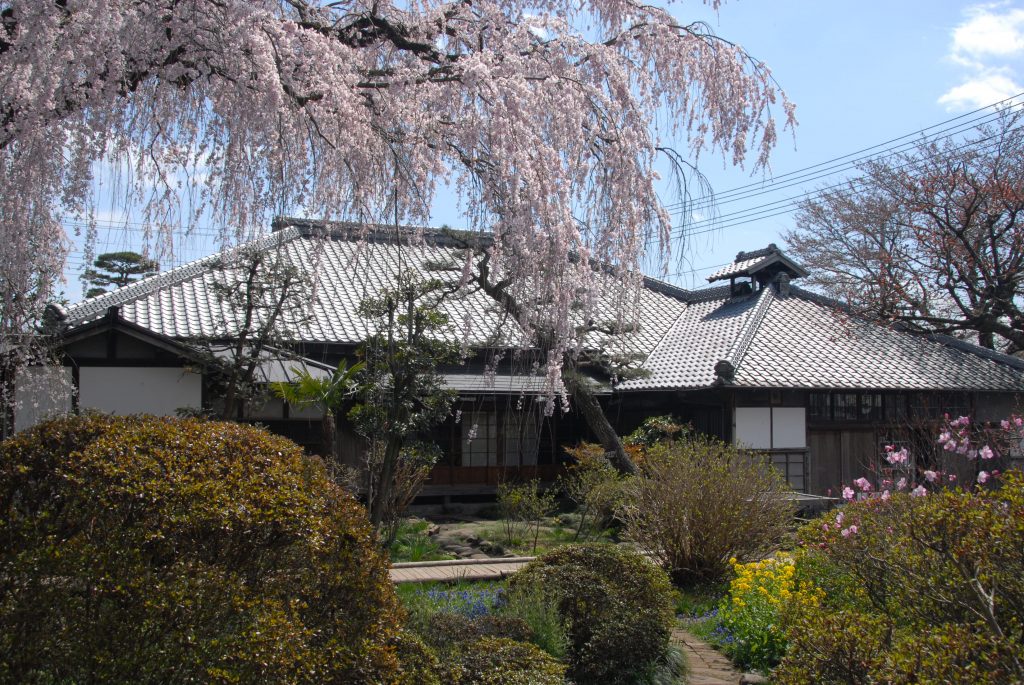
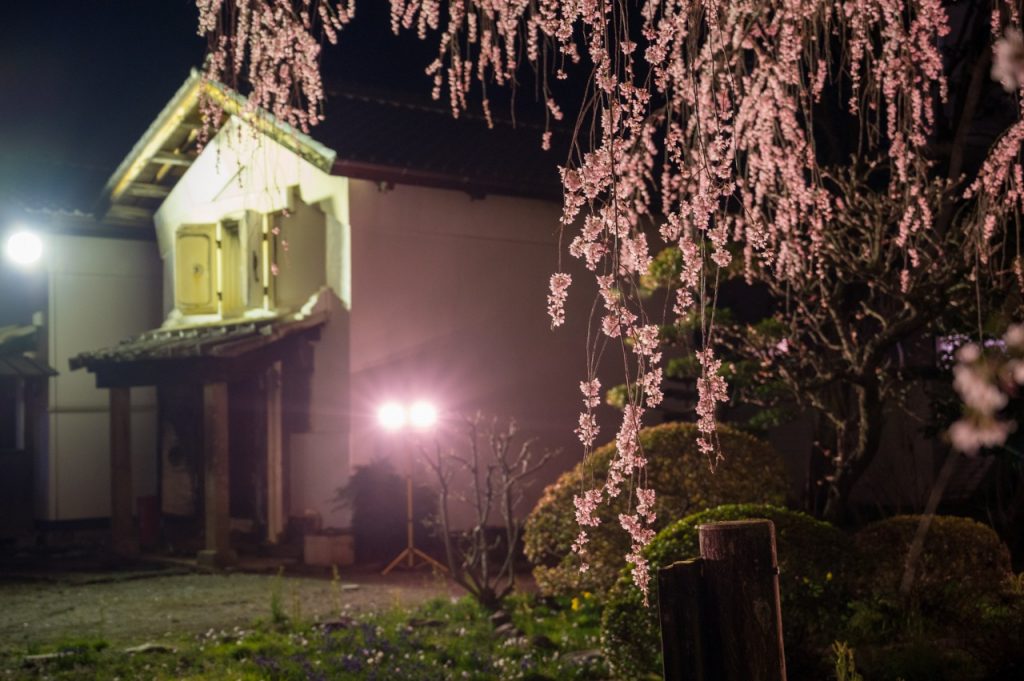
[Japan Heritage Nasuno is an archaeological excavation photo contest] Excellent work
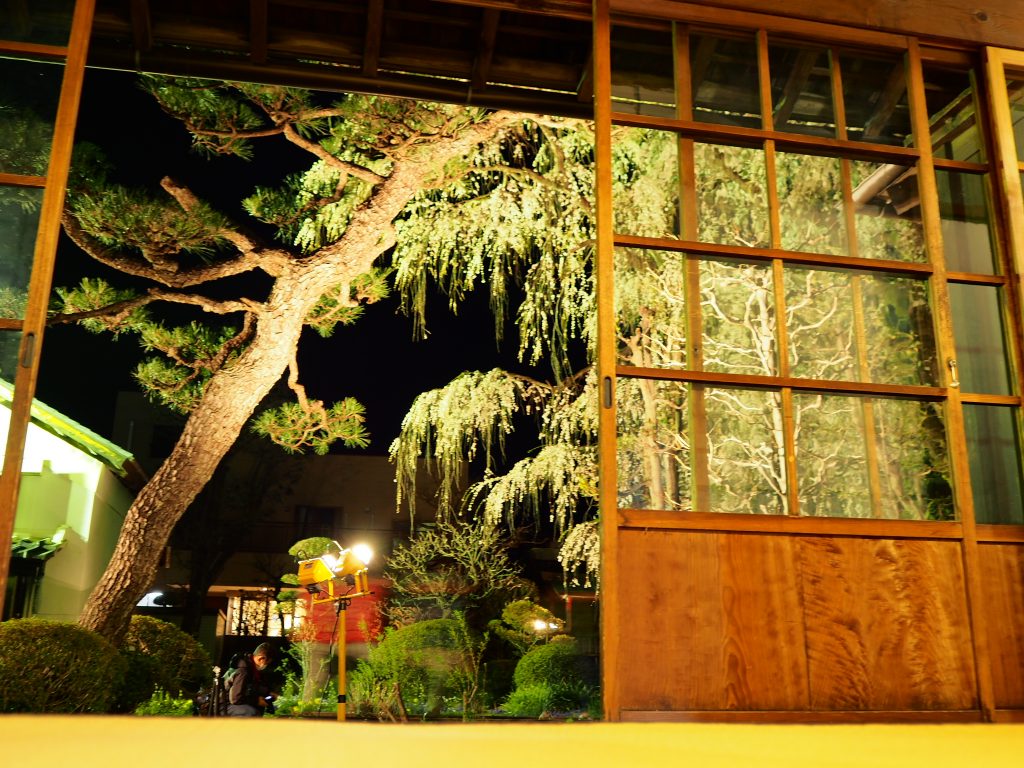
A photo of a weeping cherry tree taken through a glass door from inside the main building of the Yaita Memorial Hall at night. The cherry blossoms that can be seen and hidden from the wooden frame are illuminated by the lights, creating a mysterious atmosphere.
When I asked the person in charge, I was surprised that about 80% of the visitors were looking for this cherry blossom.
However, the weeping cherry tree is not the only attraction of the Yaita Takeshi Memorial Hall as a photo spot. Wabi-sabi is oozing out from the pillars and the astringent purlins that have become more and more tasteful over the years. Please enjoy the mansion itself with your smartphone along with the exhibition of materials ♪

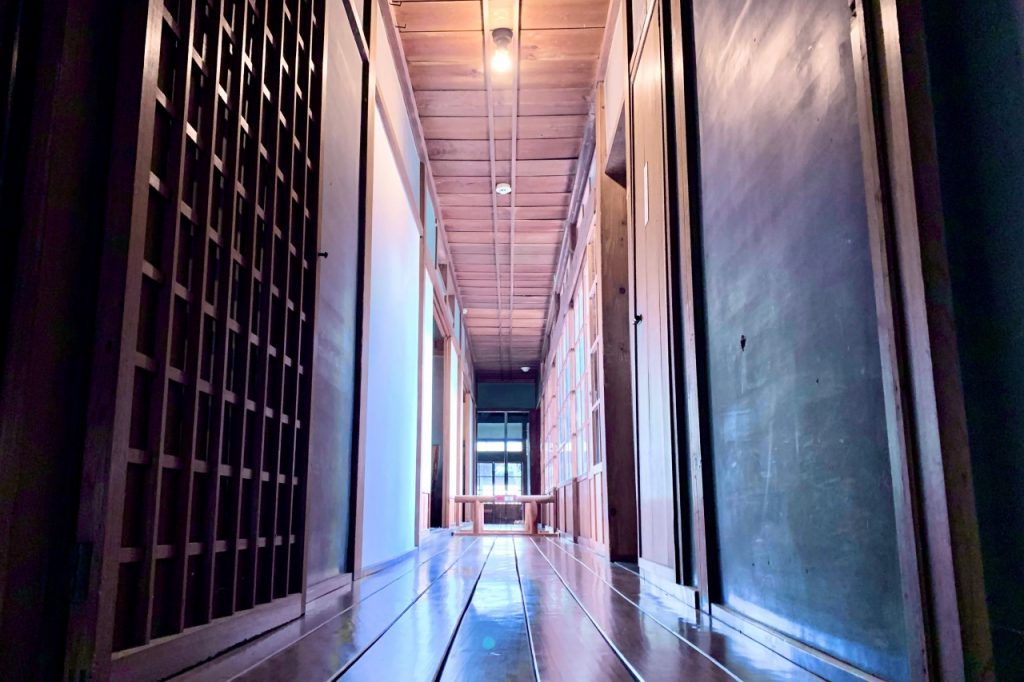
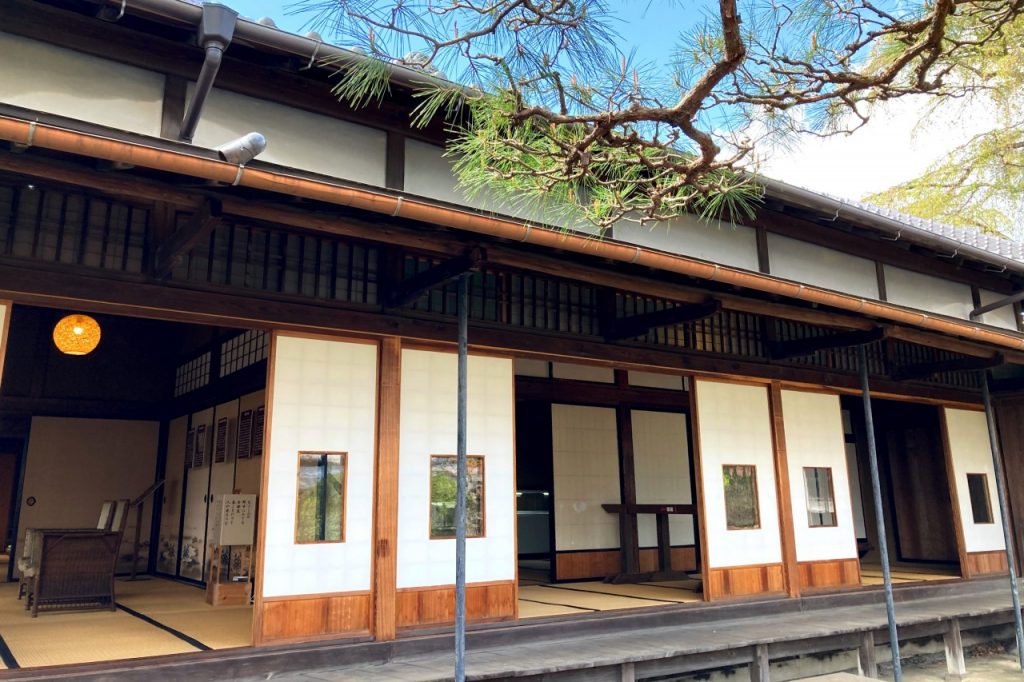
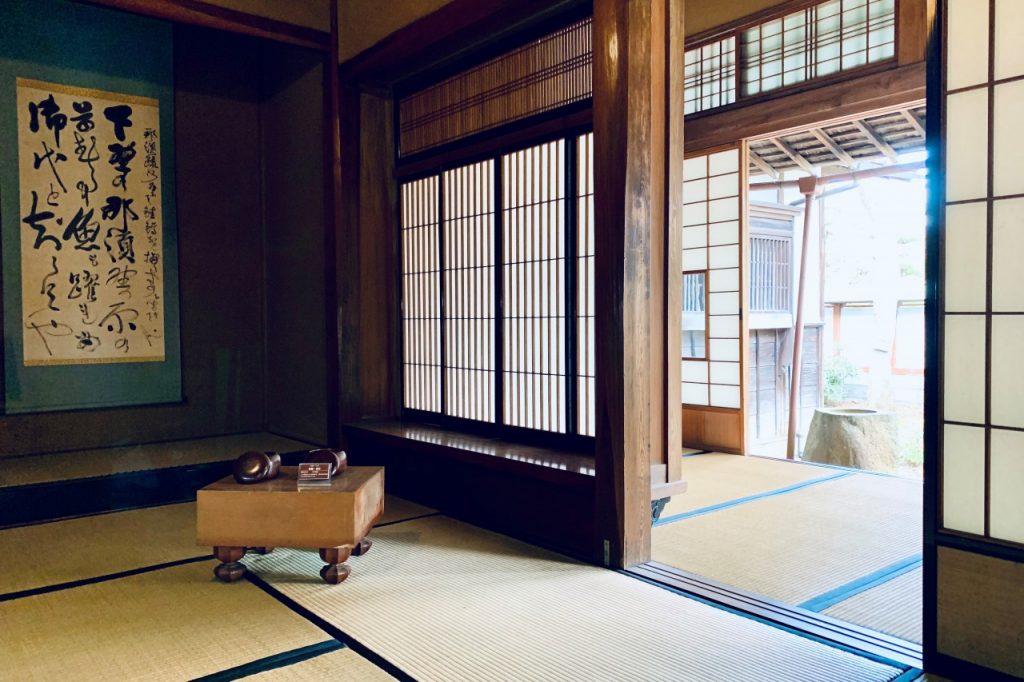
This simple yet quaint space is irresistible to those who like it.
The main building can also be used for tea ceremonies and pre-shooting for seijin-shiki. The person in charge said, "We welcome you to shoot cosplay! Please feel free to contact us." If you are looking for a place to shoot a period cosplay, why not take a realistic shot in a building with a realistic atmosphere that is different from the studio?
Recommended photo spot ② Nagamine Park (Yaita City)

Recommended time (approximate): Late March to early April, late April to mid-May
About 10 minutes on foot from JR Yaita Station, about 10 minutes by car from the Tohoku Expressway Yaita IC. Nagamine Park , which is easily accessible among the tourist destinations in Nasuno, is a park that has been selected as one of the " 100 Best Urban Parks in Japan" and is familiar to the local people.
Nagamine Park is most attractive as a photo spot during the azalea season from late April to mid-May . The number of azaleas planted on the premises is about 5,000. At its peak, the red and pink azaleas dye the park and attract visitors.
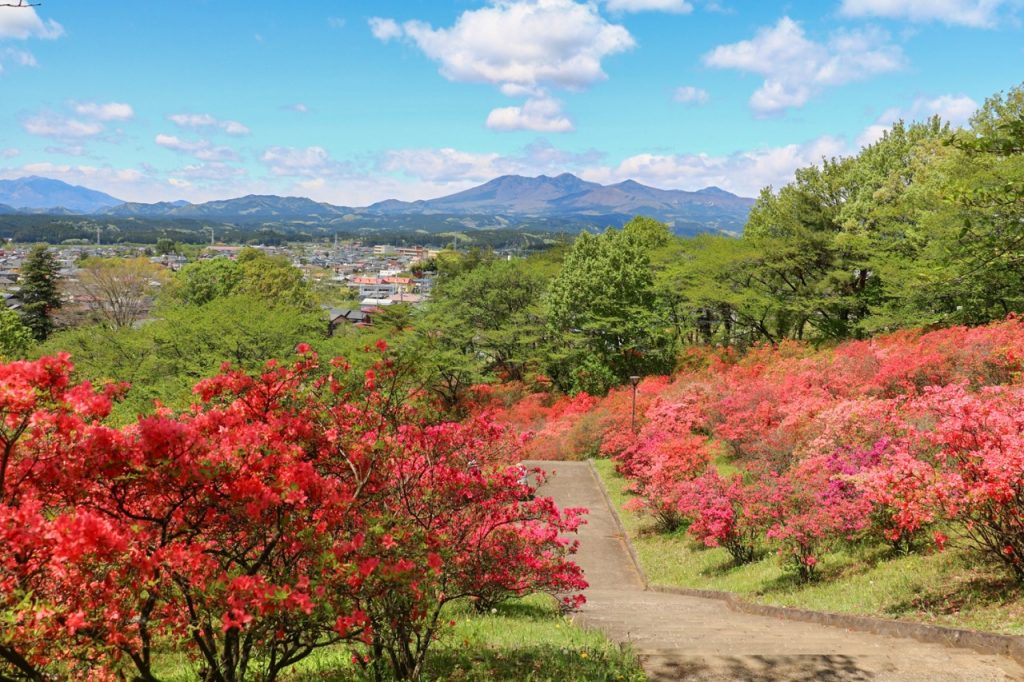
From the symbol tower (observatory) in the park, you can frame the spectacular view of the Nikko Mountains along with the azaleas, so it is a must-visit spot on sunny days.
In spring, in addition to azaleas, about 150 cherry trees lined up around the lawn square in the park and about 45,000 moss phlox are also gaining popularity.


The powerful cherry blossoms at the Yaita Takeshi Memorial Hall are wonderful, but the cherry blossoms that line up lively like Nagamine Park are also worth taking. Both are located in Yaita City, and the distance is only about 15 minutes on foot along National Highway 461, so why not explore both when sightseeing.
As a reminder, both cherry blossoms and azaleas are spring flowers, but the best time to see them is a little different. The recommended time is from late March to early April for cherry blossoms and from late April to mid-May for azaleas. However, the best time to see it may vary depending on the weather conditions, so it may be possible to take pictures together.
In addition, it seems that the splendid Yae-Beni- Shidare and moss phlox in the lawn square may still be in bloom even after the Yoshino cherry tree is scattered.
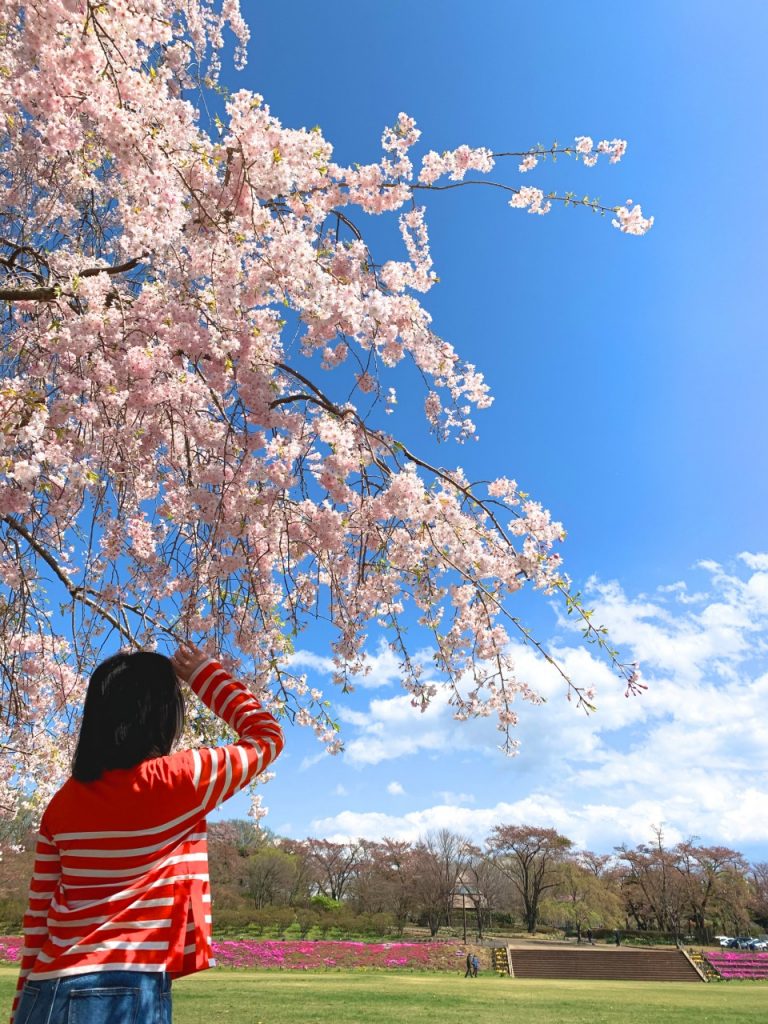
This is actually a picture of a walk in Nagamine Park after most of the Yoshino cherry trees were scattered. Almost in a chartered state, I was able to take a refreshing shot with the contrast between pink Yae-Beni-Shidare and moss phlox x blue sky.
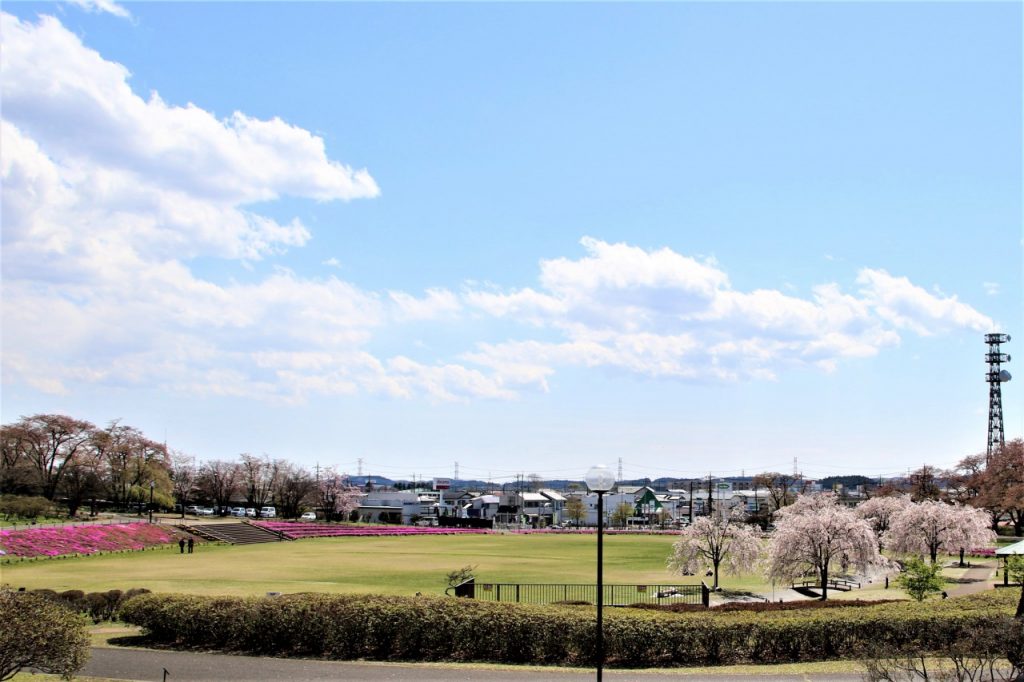

Therefore, it may be worth visiting even at the timing of "Is Yoshino cherry tree scattered?"
Since the number of benches is small compared to the area of the park, it is a good spot to walk around and frame spring rather than sitting and enjoying the scenery slowly. It's a park where the impression you get depends on where you look at it, so be sure to capture it from corner to corner!
Recommended Photo Spot ③ Kurobane Castle Ruins Park (Otawara City)
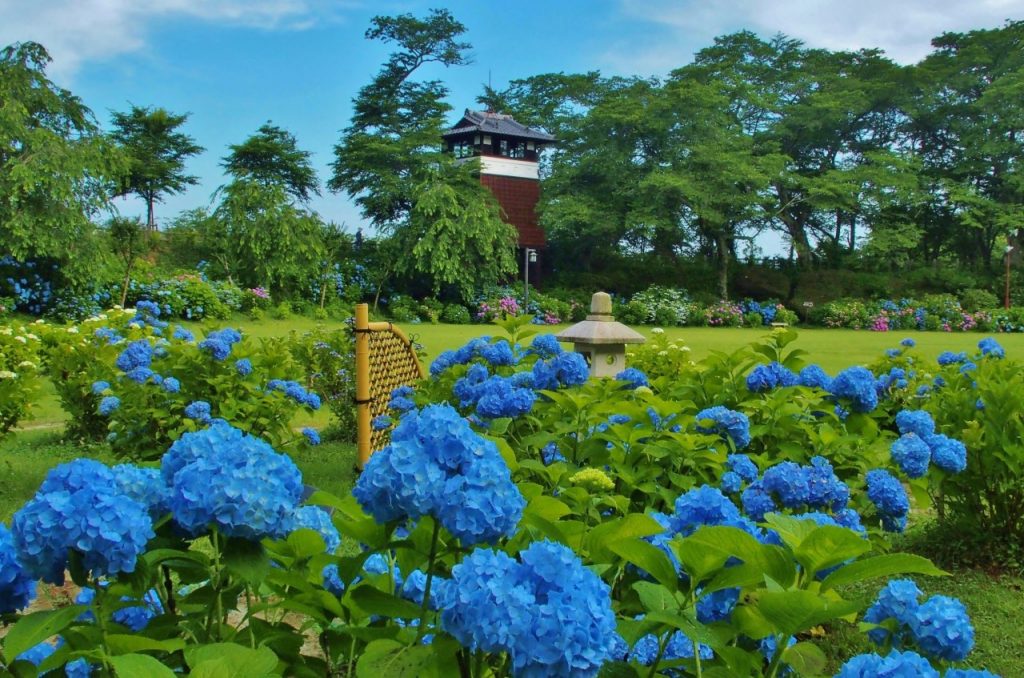
Recommended time (approximate): Late March to early April, late June to early July
Kurobane Castle Ruins Park , which is about an hour by bus + walk from JR Nishi-Nasuno Station and about 30 minutes by car from the Tohoku Expressway Nasu IC, once had the largest castle area in Kita-Nasu. It is a park that retains the remnants of.
It is known as a flower spot where you can appreciate seasonal flowers such as azaleas and cherry blossoms, but Kurobane Castle Ruins Park cannot be talked about without hydrangea!
About 6,000 hydrangeas (Gaku hydrangea, Hong hydrangea, Seiyo hydrangea, etc.) are planted around the park. In June, the Basho no Sato Kurobane Hydrangea Festival is held and is crowded with many tourists.
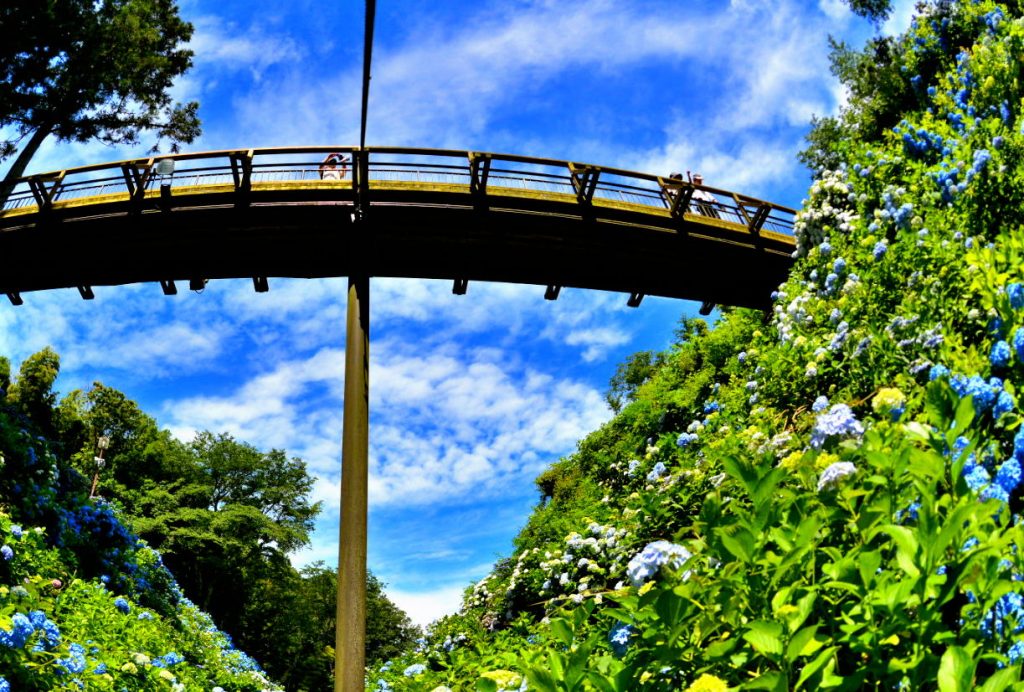
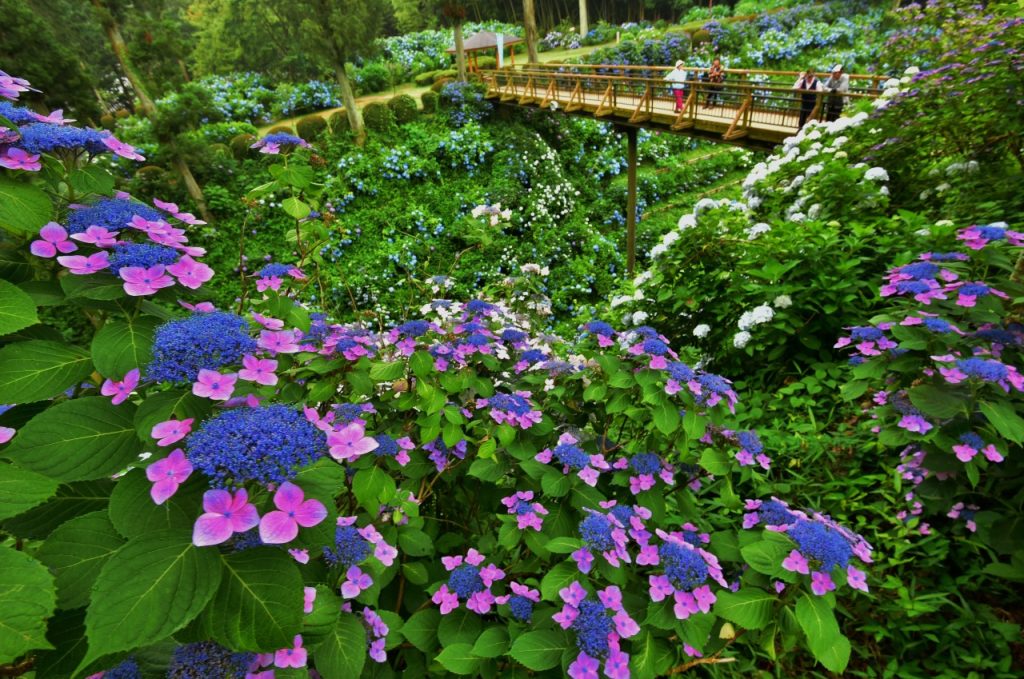
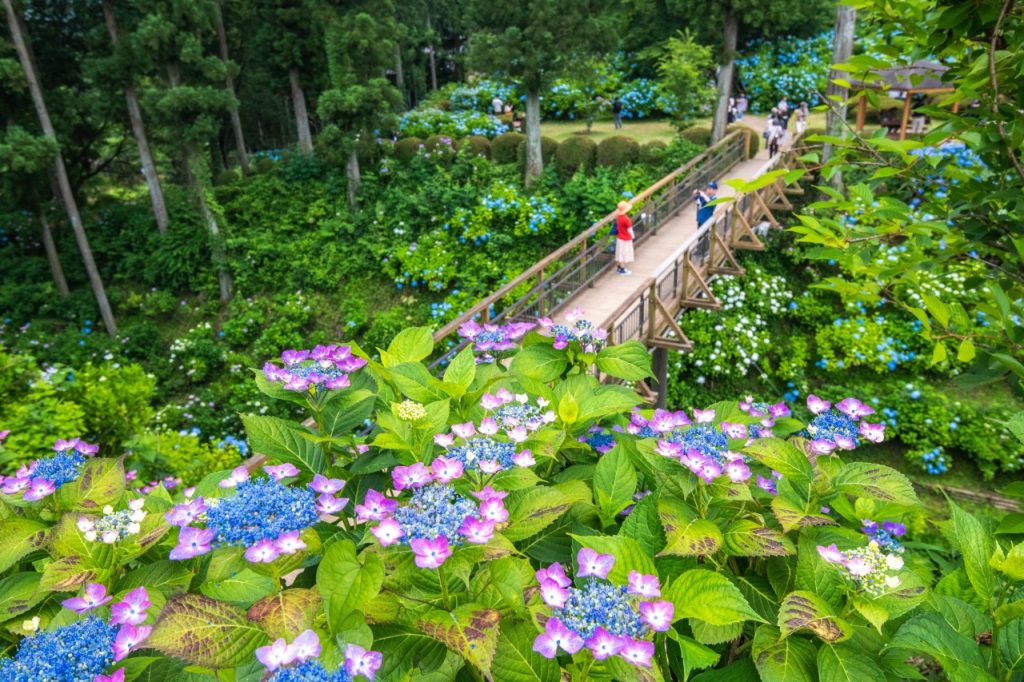
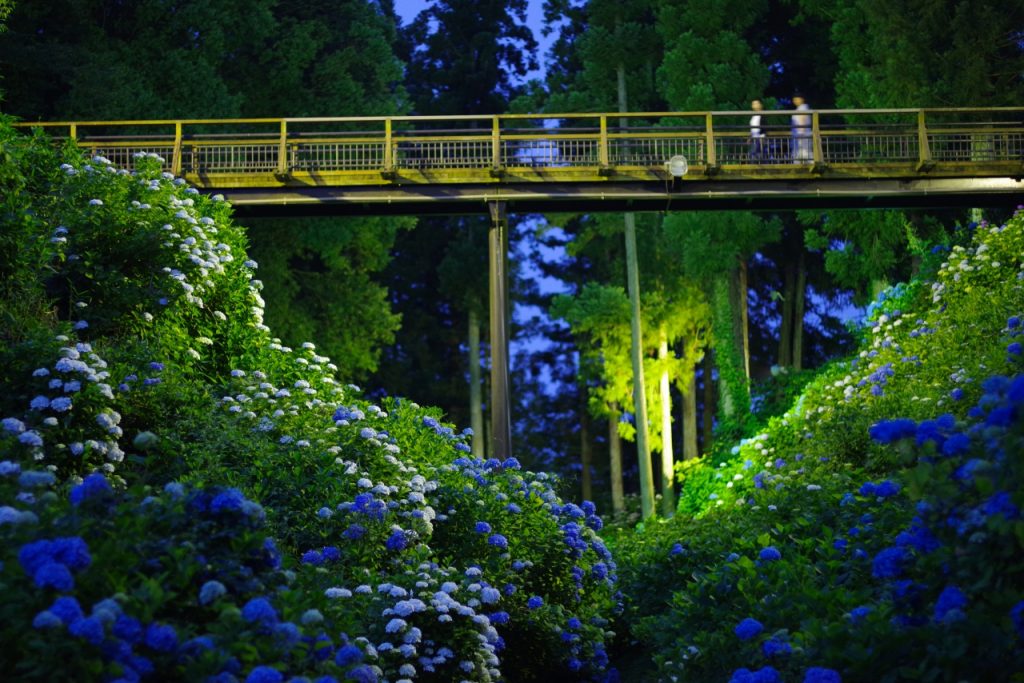
Purple, blue, and white that spread over the slopes of the moat and the ruins of the main enclosure … I just admire the spectacular scenery created by the freshly colored hydrangea. There is no shortage of shooting spots, such as overlooking hydrangea from the bridge along the moat, and walking along the road surrounded by hydrangea. If you walk, you will feel as if you are crossing the hydrangea river.
It's a hydrangea that looks good in the rain, so it's nice to be able to shoot even on a rainy day. However, as you can see, there is abundant greenery, so it is better to take measures against insects when taking a walk. Also, be careful about your clothes as the soil may be muddy during the rainy season.
There are many cultural heritage sites in the area, such as the "Kuroha Basho no Yakata", which collects materials from Matsuo Basho, so if you like literature and history, this is a place to check out.
(Kurobane in Otawara City is said to be the land where Basho Matsuo stayed for the longest time on the "Okunohosodo" trip.)
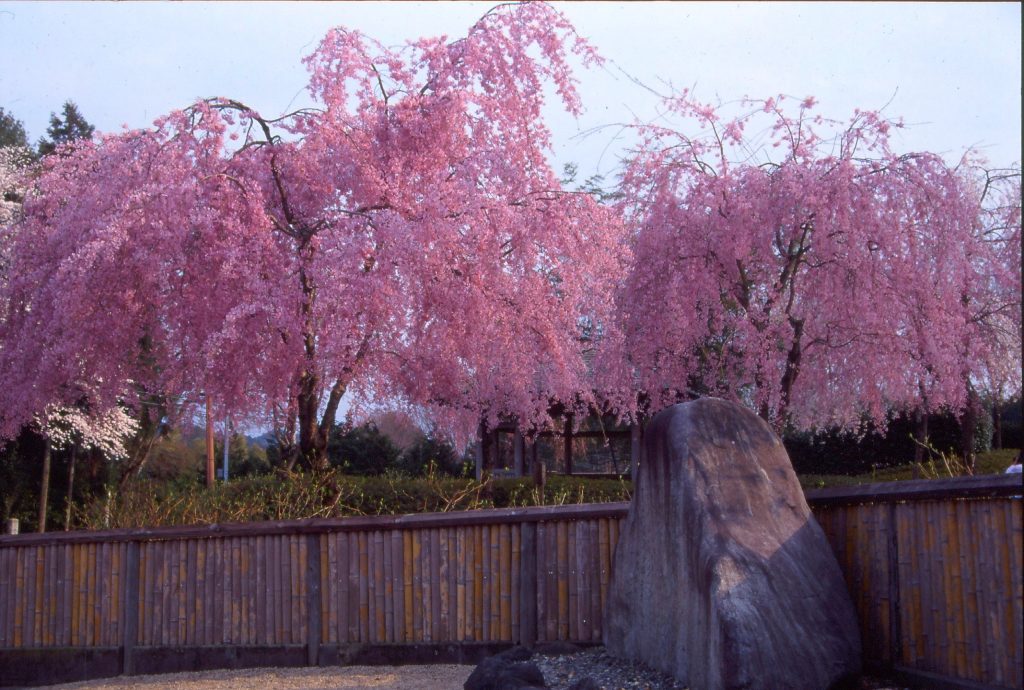
At Kurobane Castle Ruins Park, about 200 cherry trees centered on Yoshino cherry trees are one of the highlights. In particular, we recommend the Yoshino cherry tree, which is the site of the main enclosure, and the weeping cherry tree in Basho no Hiroba, where the plants that appear in Basho's haiku are planted.
Cherry blossoms are spreading to the neighborhood such as "Basho no Hiroba" and Oyado Kaido, which was selected as one of the "100 Best Roads in Tochigi". It seems that you can take a nice picture with atmosphere when you make it a subject.
Recommended Photo Spot ④ Former Aoki Family Nasu Bettei (Nasushiobara City)
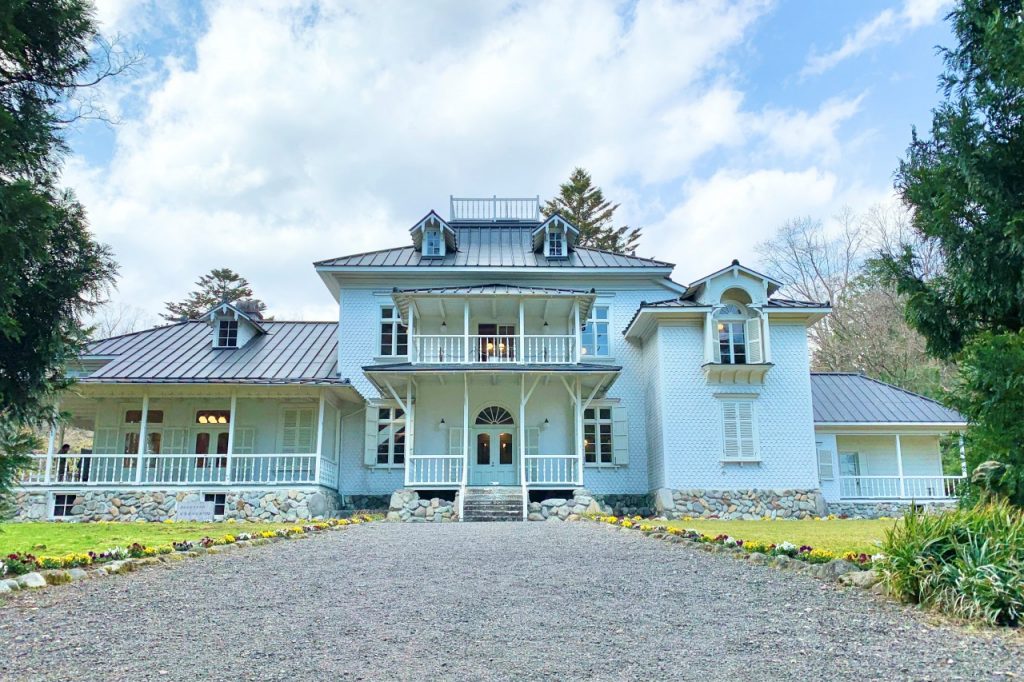
Recommended time (approximate): May-October
About 20 minutes by bus from JR Kuroiso Station, about 10 minutes by car from Kuroiso-Itamuro IC. The former Aoki family Nasu villa , which was built as the villa of Shuzo Aoki, who was the German minister and foreign minister in the Meiji era, is a white-walled Western-style building that appears after passing through a long line of cedar trees. It is also the only existing building in Japan by architect Matsugasaki Tsumunaga, who studied architecture in Germany and designed the 77 Bank head office and the Taiwan Railway Hotel.
The recommended time is from May to October. In the flower field of Hanna Garden that spreads out in front of the mansion, rape blossoms, sunflowers, cosmos and other seasonal flowers bloom. From around May, you can also enjoy the beautiful fresh greenery.
If you frame the villa with bright trees, the refreshingness of a summer resort will be greatly enhanced, so please give it a try!
[Japan Heritage Nasuno is an archaeological excavation photo contest] Best work
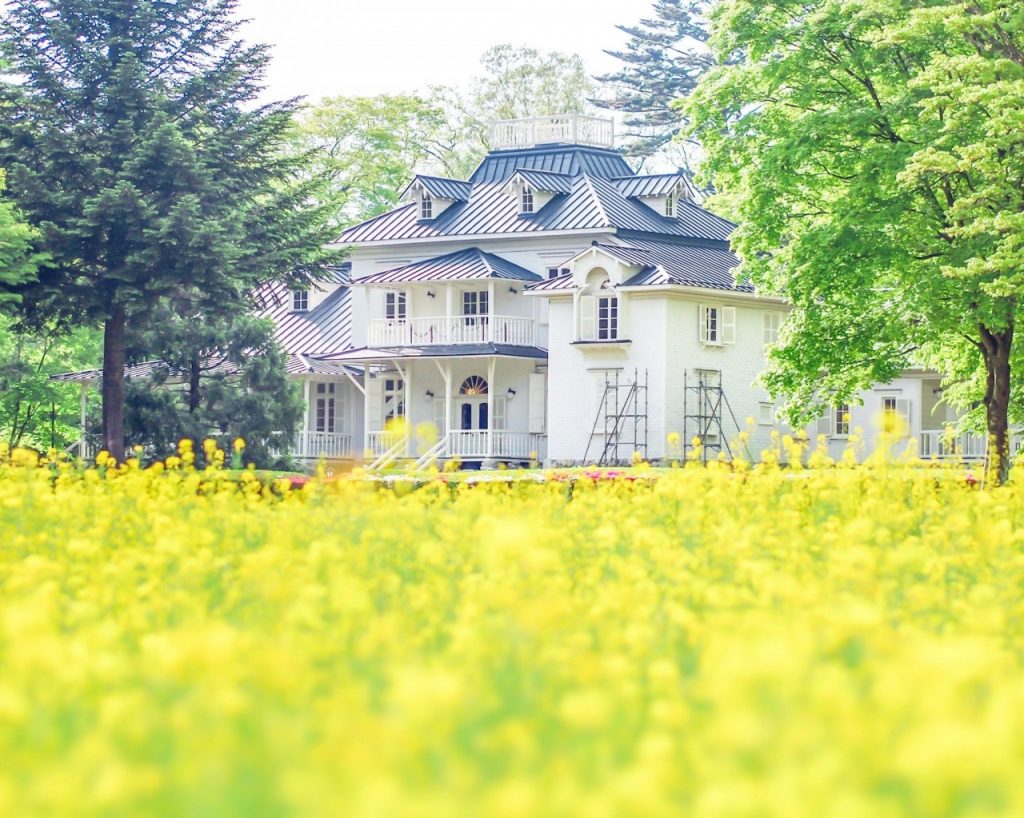
The former Aoki family Nasu Bettei gives the illusion of being wrapped in rape blossoms. It seems that it will reach here where the gentle spring sunshine is seen.
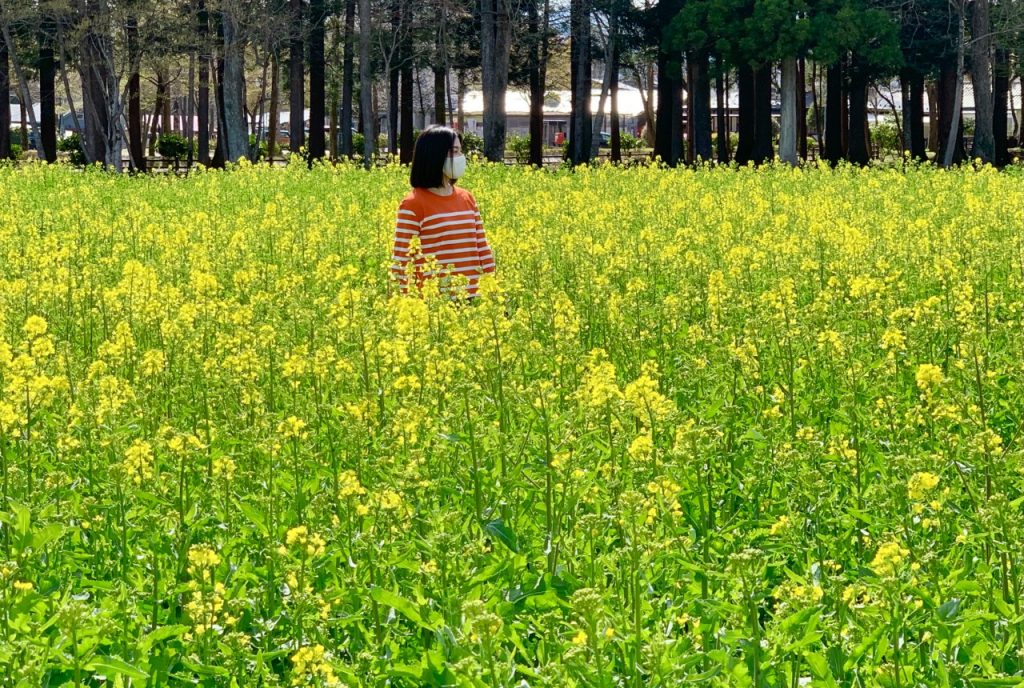
There is a promenade inside the flower field in Hanna Garden, so if you shoot from a distance, you can shoot a fairy tale surrounded by flowers like this.
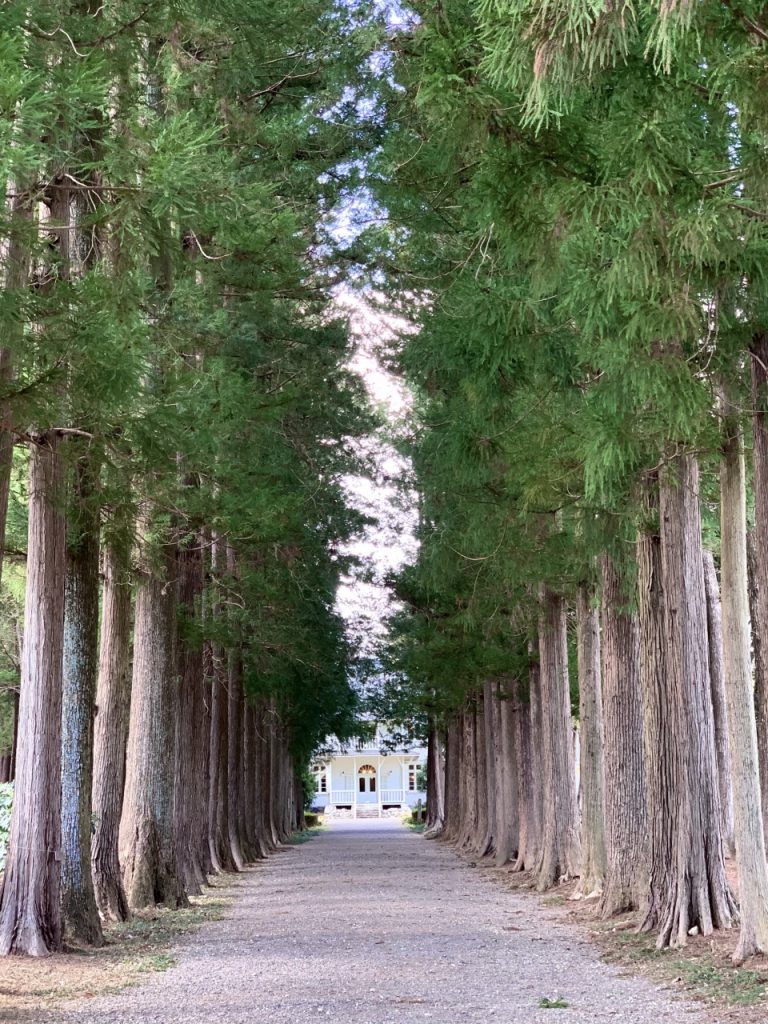
The cedar avenue leading to the mansion has beautiful symmetry, which is also very excellent as a photo spot!
When you actually visit, you may be surprised at the power of the cedar beyond the impression you get from the photo. If it's sunny, the sun will shine through the trees, so you should be able to take even more emo pictures depending on the time of day.
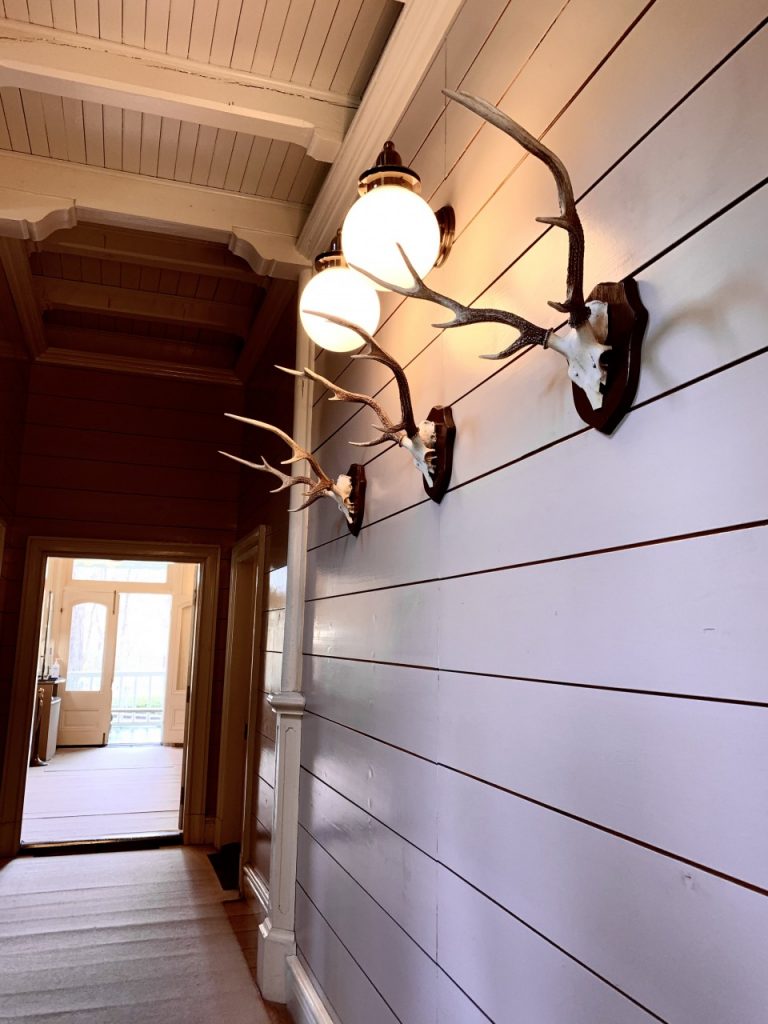

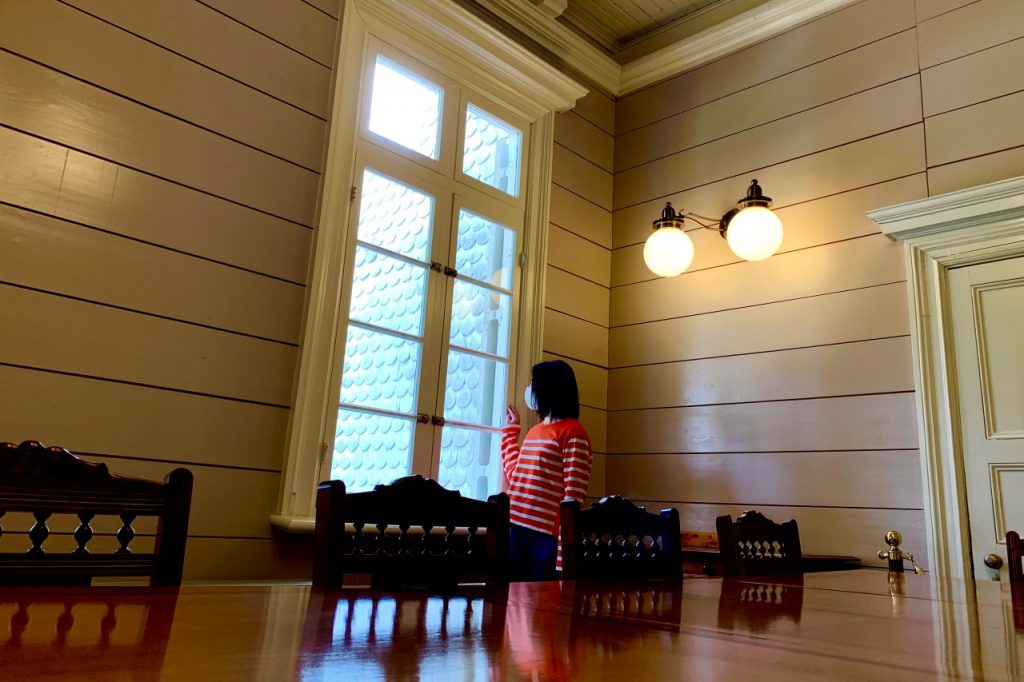
If you are not satisfied with the appearance of the mansion, please try to step inside the mansion.
The interior has a simple yet elegant impression with white wallboards. Modest lighting helps to create photos that give a moderately ennui impression.
From the terrace on the 2nd floor, you can see the cedar trees and flower fields introduced earlier. It will be fun to relive the life that the people who once lived here enjoyed while looking at the scenery.
Next to the former Aoki family Nasu villa, the roadside station "Meiji no Mori Kuroiso" is open. You can buy souvenirs at the farm market with plateau milk, special products, and fresh vegetables, or relax at the farm restaurant & ice studio "Aoki no Mori Cafe".
Recommended Photo Spot ⑤ Kinomata Valley / Kinomata Bridge Garden (Nasushiobara City)
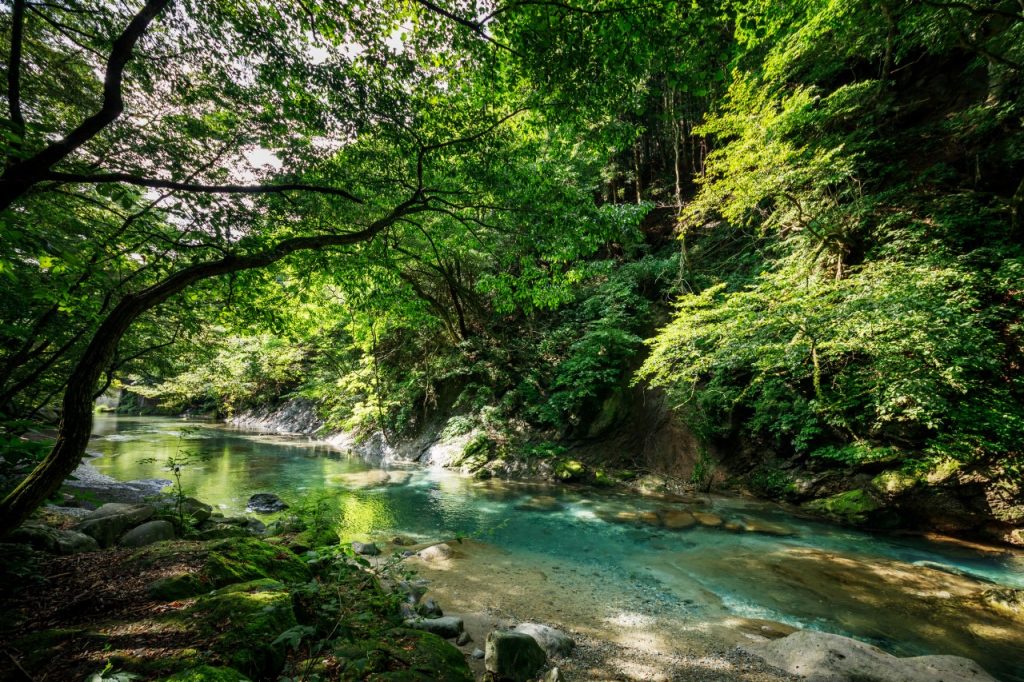
Recommended time (approximate): July-August
The area around Nasunogahara is gaining popularity as a treasure trove of waterfalls, but be sure to pay attention to the waterside other than the waterfalls!
About 25 minutes by bus from JR Kuroiso Station, about 25 minutes by car from Kuroiso-Itamuro IC. At Kinomata Valley and Kinomata Bridge Garden, where the Kinomata River, which is a tributary of the Naka River, passes, you can enjoy the magnificent scenery created by plants and large rocks.
You can reach the park from the small parking lot on the upstream side. There is a promenade along the river, and in 15 minutes you will reach the Big Rock Suspension Bridge completed in 2013 and the spot where you can worship the majesty of the giant stones, so take a walk while observing the facial expressions of the scenery that changes from place to place. Seems to be interesting.
The trees are abundant along the valley and you can enjoy it from the fresh green to the autumn leaves, but I especially recommend it from July to August when the green is deep and the rainy season is over. As you can see in the picture, the green of the plants that are full of vitality, the clear blue color of the river, and the harmony with the light are the most beautiful!

Isn't the river processed to make it look bluish? You may be worried, but please see the picture above. There is no processing here. It's a very beautiful emerald blue, isn't it?
The characteristic of the Mata River is that it is so transparent that you can see the bottom of the river. It's so transparent that you can clearly see the fish swimming.
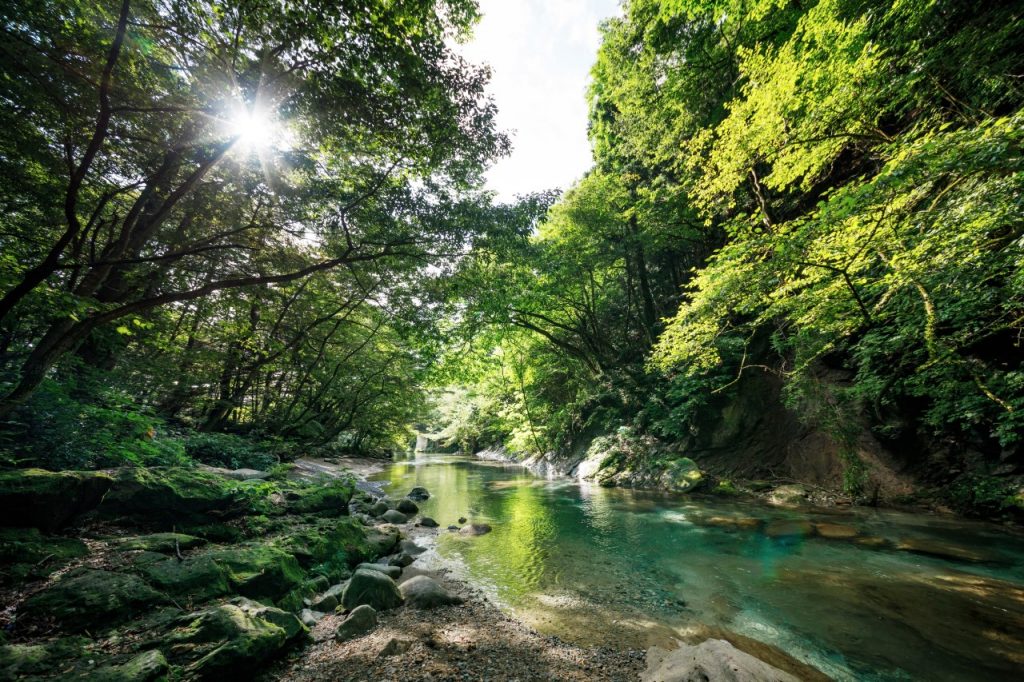

Where there are steps, the blue of the river is mixed with white, and you will be fascinated by the beauty reminiscent of blue porcelain.
The shade of blue depends on the location, but if you want to take pictures of the mysterious atmosphere in Nasu, Kinomata Valley and Kinomata Bridge Garden can be said to be a must-see location.
When you visit during the winter-early spring when there is no greenery, the impression changes suddenly, and the atmosphere becomes so desolate that you may wonder, "Is it really the same place?"
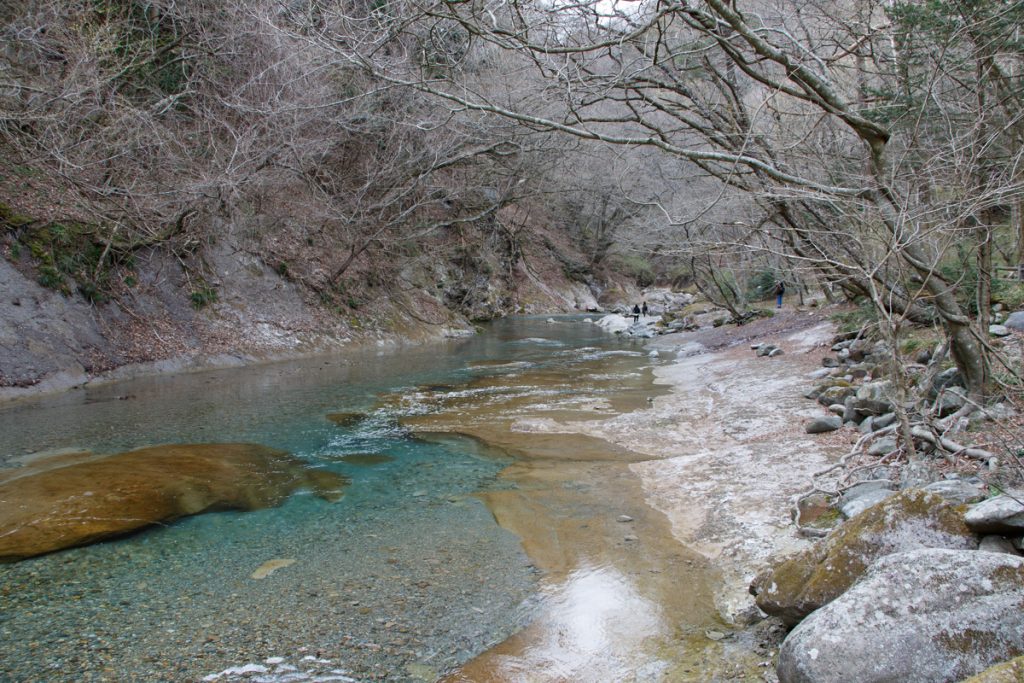
However, even if there are no plants, the blue of the river is still alive, and there is an atmosphere here, which is different from the summer.
In the summer, it is crowded with tourists and locals who enjoy playing in the river, but in the early spring when the above picture was taken, it was completely reserved. (The figure in the back is the interview team of this article)
In the clear air where the cold remains, I was able to spend a very luxurious time listening to the murmuring of the river, so it is recommended as a spot to stop by when you are tired of everyday life and relax after shooting.
Recommended Photo Spot ⑥ Nasu Stained Glass Museum (Nasu Town)
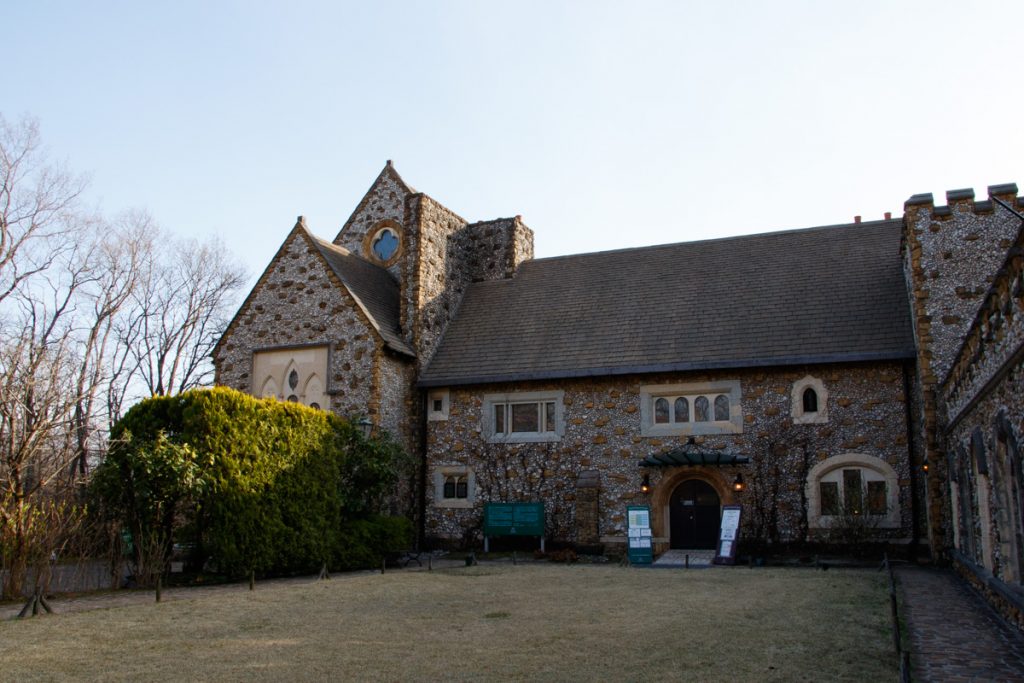
Recommended time (approximate): All year
Lastly, I would like to introduce the stone Nasu Stained Glass Museum , which was built with the motif of a manor house in the Cotswolds region of England. It is about 20 minutes by local bus from JR Kuroiso Station and about 10 minutes by car from Nasu IC.
When you step into the museum grounds, you will find a completely exotic atmosphere. It is understandable that it is gaining popularity as a wedding venue and a location for movies and dramas.
You can enjoy live pipe organs and music boxes every day in the hall where antique stained glass mainly from the 1800s and fantastic luxury lamps of stained glass lamp writer Richard Li are arranged. On weekends, concerts using various musical instruments are also held.
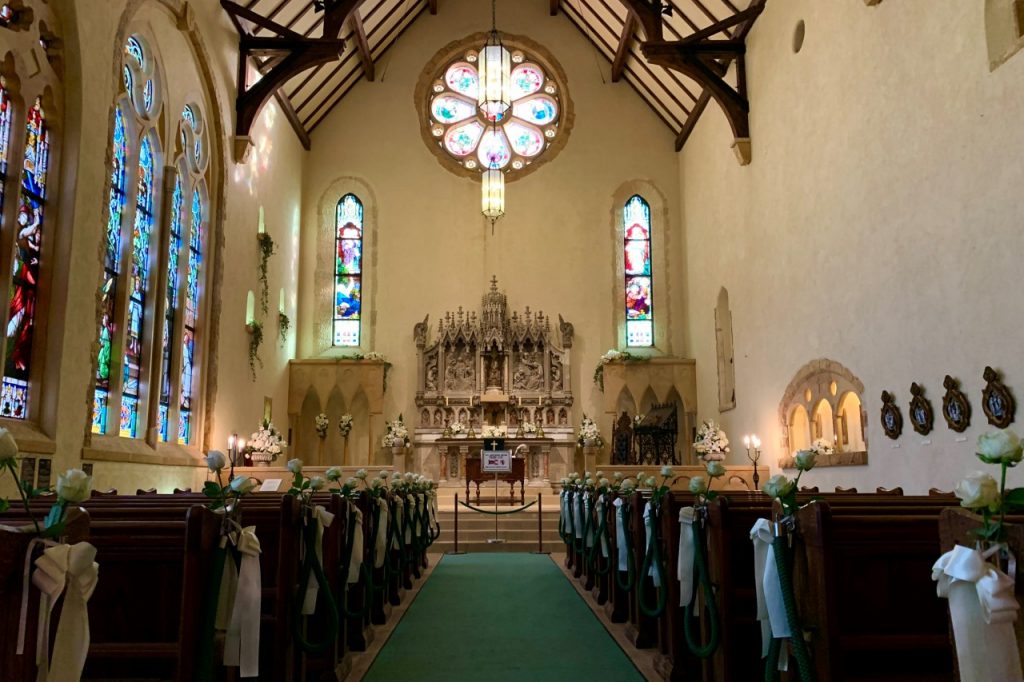

In the chapel of St. Rafael in the hall, Gothic stained glass with Bible scenes is all over the wall! As it is the largest antique stained glass in this museum, its majestic beauty is unspeakable. It is a spot that you definitely want to take a picture with the rose window that shines divinely in front of the chapel.
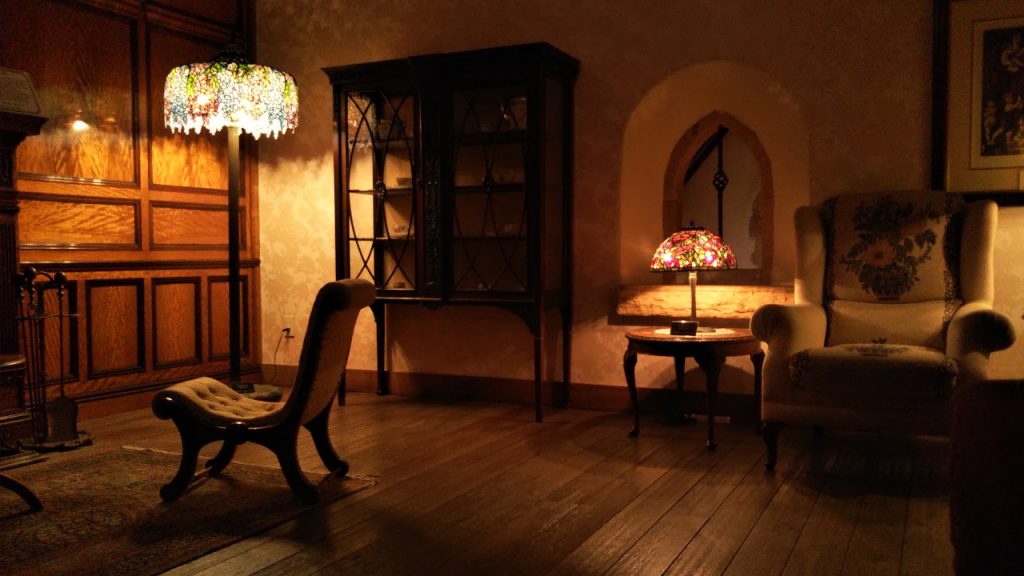
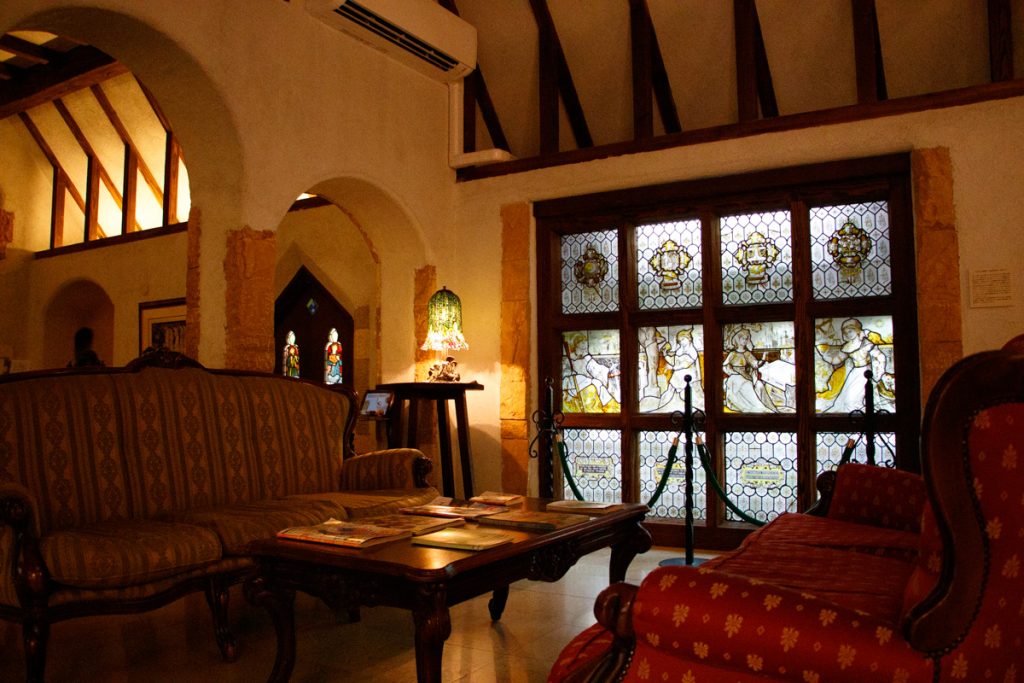
The dignified interior is elegantly placed to complement the large and small stained glass works, and it is more like an aristocratic mansion than a museum. By the way, the chairs in the hall are OK to sit down, so it may be fun to gracefully pose and immerse yourself in the aristocratic mood.
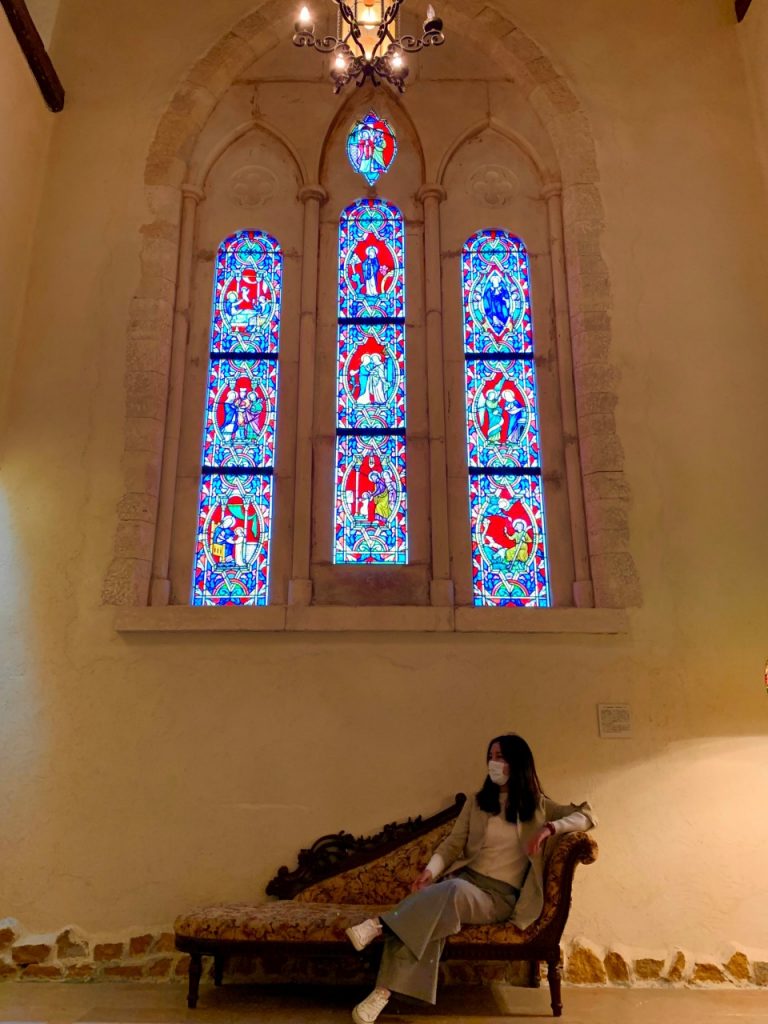
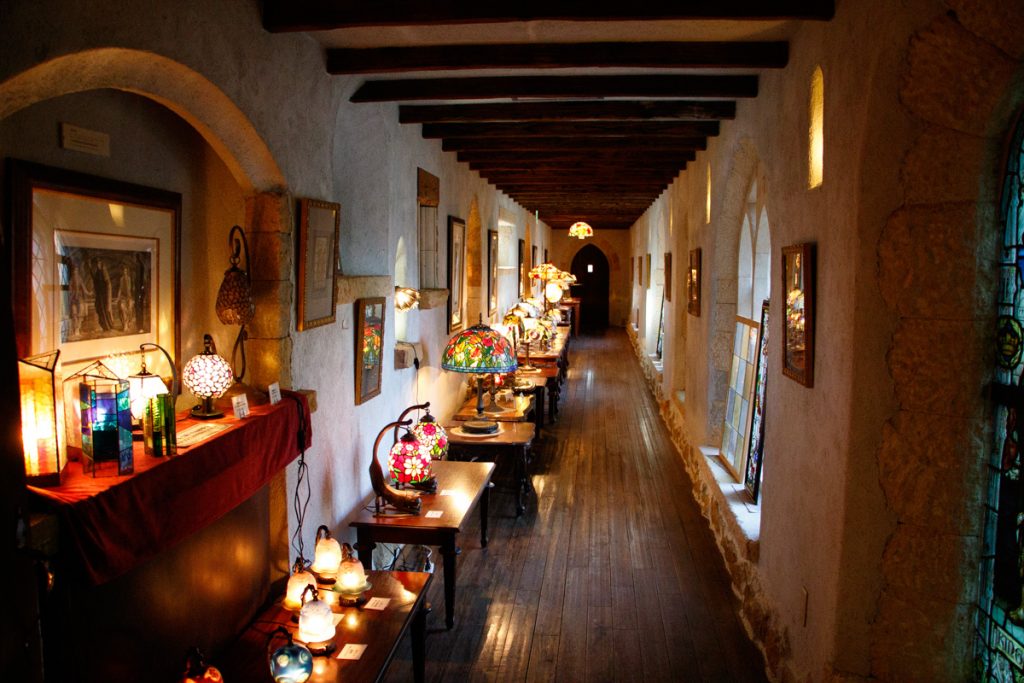
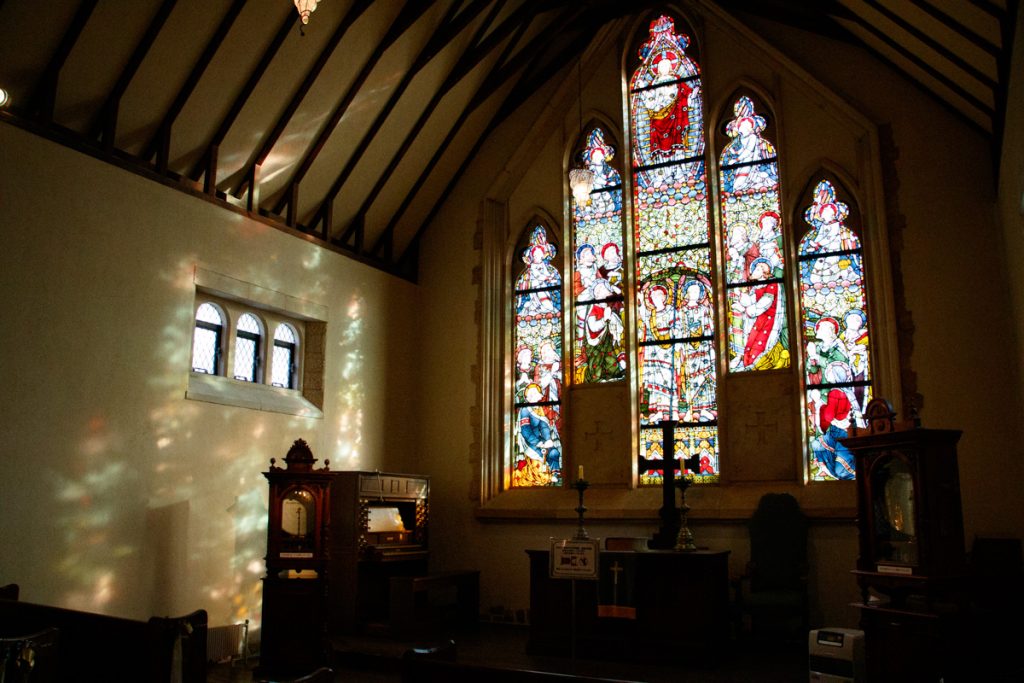
The glow that spills from the stained glass greatly changes the impression depending on the intensity and color of the sunlight. In the strong summer sunshine, in the setting sun … I want to capture various facial expressions, and I feel like I'll just stay longer. Having fun regardless of the season may be the greatest strength of the Nasu Stained Glass Museum as a photo spot.
In the building adjacent to the museum, there is also a cafe where you can taste the popular panna cotta and a stained experience class that you can enjoy with your family. At the shop, you can buy various souvenirs such as lamps, stained glass-style bookmarks, and stationery.
If you like beautiful things, this is a spot that you won't get tired of even if you spend a whole day enjoying it. Please make sure you have plenty of time to visit ♪

